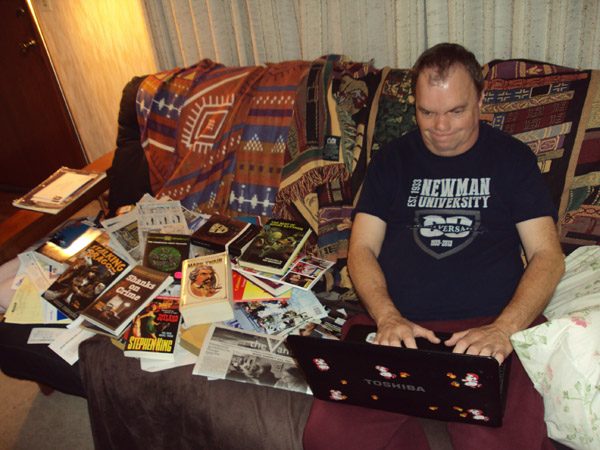
On Beyond Cisgender: Books For High School
By Jeff Baker
A. M. (Amy) Leibowitz has grumbled on Facebook about the “Old Dead White (mostly/presumed) Cis Hetero Male Literature Canon,” and how high-schoolers mainly read books from the aforementioned canon. No authors of color. Rarely any women. “Only literary fiction and other genres are typically not only disallowed but actively sneered at.” A. M. goes on to ask that if you could add any 4 books to a high school literature curriculum (one for each year of US High School) which would you add and why?
Among the Facebook users recommendations of spec-fic or mystery were Ursula LeGuin’s “Left Hand of Darkness,” “Tuck Everlasting” by Natalie Babbitt, any of Greg Herren’s Mystery short-stories or YA novels. (Non-spec-fic books like “The Color Purple” got recommendations as well.)
Here are a few authors I could suggest.
Leigh Brackett may be better remembered for her work in the noir mystery genre (“The Big Sleep”) or for writing the first draft of the screenplay for “The Empire Strikes Back” (the movie was dedicated to her memory) but she also wrote a lot of science fiction set on an Edgar Rice Burroughs-style Mars, But her novel “The Long Tomorrow” belongs in every library of classic sci-fi. According to Brackett, the idea came from observing the nearby Amish community and realizing that after a nuclear war, “the Amish would be perfectly suited to live in a nonmechanical world.” (Quote from introduction by Edmond Hamilton to “The Best of Leigh Brackett.”)
C.L. Moore started out writing for “Weird Tales” where her story “Shambleau” was one of the most popular the magazine ever received. Like Brackett’s first name, Moore’s use of her initials hid her gender in the era of male-dominated popular fiction. After her 1940 marriage to pulp writer Henry Kuttner most of what they wrote was some form of collaboration. (Friends recount stories of one of them upstairs at the typewriter while the other chatted happily downstairs with visitors then trading places without a break in the typing.) Some of her best short work can be found in “The Best of C.L. Moore,” happily available in a digital edition. It includes “Shambleau,” “No Woman Born,” (a rare pulp-era story blending a female protagonist, the arts and cybernetics) and “Vintage Season,” collaboration with Kuttner which was, decades later, voted one of the best science-fiction stories ever. Remember that these stories are over sixty years old, and while some of the ideas are considered clichés now, they were fresh and new when Moore dreamed them up, and they still can grip the reader.
Samuel Delany is a master of science fiction and fantasy who I have not read much of. However, he was a Black, Gay author writing stories of non-binary characters in the 1960s. He’s still around and publishes occasionally!
Octavia Butler was the first Black female science fiction writer to gain prominence. She often wrote about racial issues as in her novel “Kindred.” And yes, she was gay.
“I began writing about power because I had so little,” Butler said.
There were other science fiction writers who don’t fit the cisgender white male image who would be ideal for High School reading lists. Many were featured in the two volume “Women of Wonder” anthologies of two decades ago. (“Women of Wonder; the Classic Years” and “Women of Wonder: the Contemporary Years,” both edited by Pamela Sargent from 1995.)
And remember, the very first science-fiction novel was written by a woman; Mary Shelley’s “Frankenstein.”
—end—
Jeff Baker blogs about writing and reading science fiction, fantasy and horror and other sundry matters on or about the thirteenth of each month. His stories have been published on the “Monsters Out Of The Closet” podcast among other places. He and his husband Darryl wish all the readers the very best for the holiday season. He posts fiction on his blog, authorjeffbaker.com.https://authorjeffbaker.com/ and can be found on Facebook at Jeff Baker, Author.https://www.facebook.com/Jeff-Baker-Author-176267409096907/



